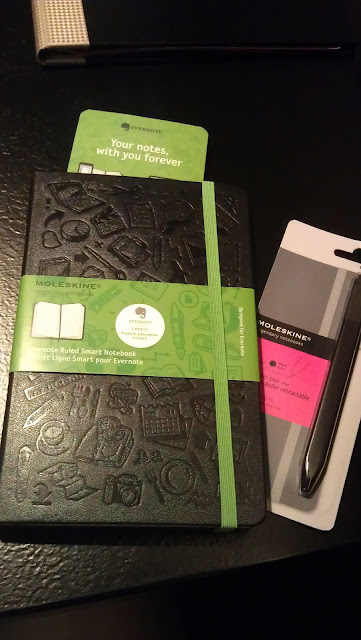你也許好奇,他跟塑膠有什麼關係呢?
其實,當年的GE也曾擁有塑料部門,賣很多的PC,但在2007年被阿拉伯商SABIC併購了。不過即使到現在,大家對GE的塑料還是很有印象。
為什麼要賣掉塑料部門呢?這就是傑克威爾許的策略厲害了,雖然那時他早已退休,但是GE一直保有他引進的思維:「賣掉不賺錢的部門」「趕走多餘的員工」。
塑膠料以前曾經很好賺沒錯,但那個光輝時代已經過去,所以在還有價值的時候,賣給有錢有油的阿拉伯王子,不是皆大歡喜嗎?
所以極簡風不是只有apple的賈伯斯會好嗎,人家威爾許早就參透其中的奧秘了,一定要致敬一下!RIP
奇異前董事長兼執行長威爾許過世 享壽84歲
2020-03-02 23:44 經濟日報 / 編譯陳律安/綜合外電
被譽為「20世紀最佳經理人」的奇異前董事長兼執行長威爾許(Jack Welch),已於1日逝世,享壽84歲。遺孀蘇西.威爾許(Suzy Welch)表示,威爾許周日(1日)晚間因腎衰竭離世。
威爾許出身藍領家庭,憑藉努力不懈,一路做到奇異董事長兼執行長。他在執掌奇異20年間,該公司的市值由120億美元一路衝高至4,100億美元,成為市值第二高的公司,僅次於微軟,但後來奇異營運走下坡。
威爾許在領導奇異期間,打破官僚作風,大刀闊斧整頓,裁減數萬人,為他贏得「20世紀最佳經理人」與「中子彈傑克」的稱號。 威爾許也收購與出售多項事業體,將奇異的經營範疇從製造業擴展至金融服務和顧問領域。
在他任職董事長第七年時,創立了奇異資本銀行;此外,他主導的知名收購案包括併購基德投資銀行(Kidder Peabody)和美國無線電公司(RCA)。
威爾許發明了活力曲線,以工作熱情為標準,將員工分為前20%的A級,中間的70%列為B級,及墊底10%列為C級,績效落後者通常遭到裁員。他也引進了六個標準差的品管改善計畫,成為管理學的經典守則。
Sabic acquires GE Plastics for $11.6 billion
June 30, 2007
This is Sabic’s third large plastics acquisition, and certainly its boldest. In 2003 it acquired Dutch supplier DSM‘s European polyolefins business, and late last year acquired Huntsman’s European commodity chemicals business. Sabic is the fourth-largest global supplier of polyolefins: #3 for polyethylene and #6 for polypropylene. Sabic was founded in 1976 by the Saudi Arabian government, which still owns 70% of Sabic shares with the remainder held by private investors in the Gulf region.
With GE Plastics, it grabs a much larger, and more global, supplier. Sabic’s purchase is a big bet on the automotive industry, from which GE Plastics derives some $4.4 billion of its sales. It’s also a huge bet on polycarbonate, which account for more than half of GE Plastics’ sales. GE Plastics had 2006 profit of $674 million on revenues of $6.645 billion. Mohamed Al-Mady, vice chairman / CEO of Sabic, in a statement, said, “This business is complementary to our existing business without any overlaps.
Sabic‘s intention is to grow the business globally.” He added, “Sabic is well-positioned to do this, while adding high-performance plastics to the product range Sabic currently offers to customers.”
The acquisition, subject to regulatory approvals, should be complete by the third quarter of 2007. GE Plastics is closely identified with the firm’s Lexan polycarbonate (PC) but also supplies ABS, SAN, ASA, PPE, PC/ABS, PBT and PEI, as well as the LNP line of specialty compounds.
The acquisition appears a good fit for Sabic; is it good news or bad for GE Plastics? Speaking during a press event in Antwerp in early June, Heiner Markhoff, president of GE Plastics Europe, opined that, “
It was the best thing that could have happened to us,” from a strategic fit as well as when compared to GE Plastics’ possible future under a private-equity investor.
Naturally, some others were more critical. One of them, Uwe Wascher, former CEO of GE Plastics Europe, allowed that the Sabic purchase probably was the best outcome for GE Plastics under the circumstances, but was vehement in stating that the plastics business at GE had been poorly managed in the last years, with its poor results essentially forcing GE to sell it. He was especially critical of GE Plastics’ inactivity in China, where it has only a compounding plant acquired in the LNP purchase in 2002.
GE Plastics recently cancelled plans to build a PC plant in China, but Khaled Abdullah Al-Luhaidan, product manager, polycarbonate, at Sabic, told MPW in an interview at the Chinaplas show in May that his company still plans construction of a 260,000-tonnes/yr PC facility in Saudi Arabia with completion slated for 2009.
Bayer MaterialScience (Leverkusen, Germany), just ahead of GE Plastics as the world’s leader in PC supply, is doubling capacity at its 100,000-tonnes/yr PC plant in Shanghai next year and recently brought on line 7500 tonnes/yr of capacity for fiber-reinforced PC compounds, boosting capacity there to 45,000 tonnes/yr. Rainer Retting, head of the PC business unit at Bayer, says, “Globally the industry needs to add 200,000 tonnes/yr of additional PC capacity to keep pace with demand. We are currently evaluating our options for adding a further 200,000 tonnes/yr of capacity in the Asia Pacific by 2009–10.”
